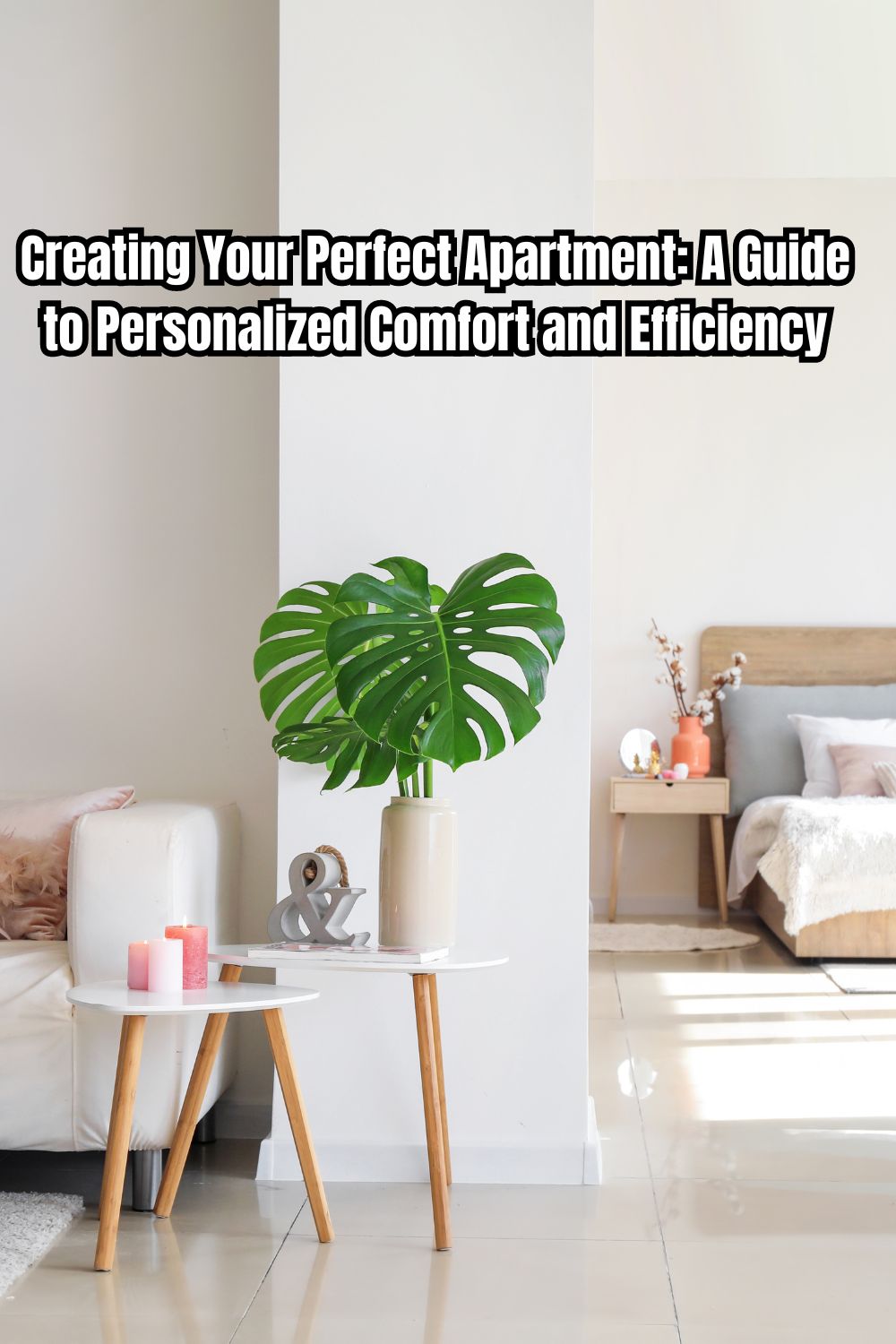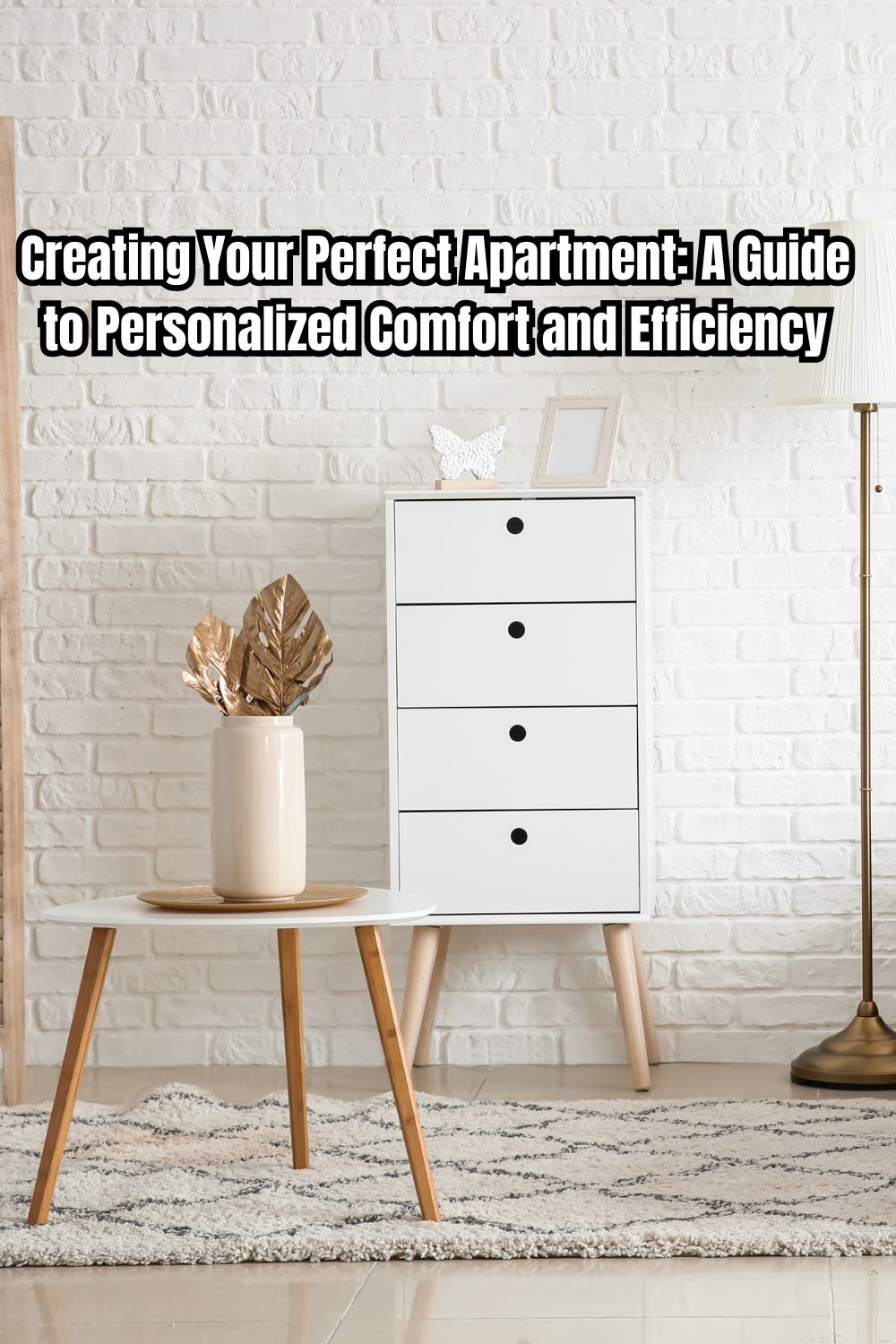Looking for ways on Creating Your Perfect Apartment? Here’s A Guide to Personalized Comfort and Efficiency
Creating Your Perfect Apartment: A Guide to Personalized Comfort and Efficiency
In our increasingly hectic world, our homes have become more than just places to sleep — they’re sanctuaries where we rejuvenate, express ourselves, and find solace. While the concept of an ideal apartment varies for each individual, the fundamental goal remains consistent: arranging everything to suit your unique needs and preferences. This comprehensive guide will explore various aspects of apartment design and organization, empowering you to transform your living space into a personalized haven. From innovative storage solutions to selecting the right furnishings, including versatile pieces like end tables, we’ll cover essential strategies to help you craft an apartment that truly feels like home.
Assessing Your Space and Defining Priorities
Before embarking on your apartment transformation journey, it’s essential to conduct a thorough evaluation of your living space and identify your key priorities. Begin by taking precise measurements of your apartment and creating a detailed floor plan. This visual aid will prove invaluable as you make informed decisions about furniture placement and storage solutions. Reflect on your daily routines, hobbies, and lifestyle to determine which areas of your apartment require the most attention and customization.
Next, compile a list of must-have elements and features for your ideal living space. This might include a restful sleeping area, a productive workspace, abundant storage options, and a welcoming living room complete with functional end tables to enhance your comfort. By clearly outlining your requirements, you’ll be better equipped to make choices that align with your vision for the perfect apartment.
Innovative Storage Solutions for Space Optimization
One of the most significant hurdles in apartment living is maximizing limited square footage. Fortunately, a plethora of inventive storage solutions can help you maintain organization without compromising on style or comfort.
- Vertical Maximization: Harness underutilized wall space by installing floating shelves, hanging organizers, or floor-to-ceiling bookcases. This approach preserves valuable floor area while offering ample storage for books, decorative items, and everyday necessities.
- Dual-Purpose Furnishings: Invest in pieces that serve multiple functions, such as storage ottomans, coffee tables with integrated drawers, or platform beds with built-in storage compartments. These versatile items enhance functionality without contributing to clutter.
- Door-Mounted Organizers: Capitalize on often-overlooked spaces by affixing organizers to the backs of doors. These are ideal for storing footwear, accessories, cleaning supplies, or pantry items.
- Vacuum-Sealed Storage: Compress bulky seasonal items like winter garments or extra bedding to free up valuable closet space.
- Wall-Mounted Desks: If you require a workspace but lack room for a traditional desk, consider a collapsible wall-mounted option that can be folded away when not in use.
- Magnetic Wall Strips: Install magnetic strips in the kitchen to hold knives, spice containers, or small metal utensils, liberating drawer and counter space.
By implementing these innovative storage solutions, you’ll create a more organized and spacious-feeling apartment, allowing you to focus on the elements that truly matter to you.
Strategic Furniture Selection and Arrangement
Choosing appropriate furnishings and arranging them effectively is crucial for creating a comfortable and functional living environment. Consider these tips to maximize your apartment’s layout:
- Proportional Scaling: Select furniture that complements your space without overwhelming it. Oversized pieces can make rooms feel cramped, while undersized items may appear out of place.
- Functional Zoning: Divide your apartment into distinct areas for various activities, such as sleeping, working, dining, and relaxing. Utilize area rugs, decorative screens, or strategic furniture placement to delineate these zones.
- Circulation Optimization: Arrange furniture to facilitate easy movement throughout the apartment. Avoid obstructing pathways or creating unnecessary obstacles.
- Corner Utilization: Maximize often-neglected corner spaces with L-shaped desks, corner shelving units, or cozy reading nooks.
- Quality Investment: Prioritize well-crafted, durable furniture that will withstand the test of time. This is particularly important for frequently used items like sofas, beds, and dining tables.
- Modular Flexibility: Consider modular furniture systems that allow you to customize your layout and adapt to changing needs over time.
- End Table Integration: Incorporate these versatile pieces to provide convenient surfaces for lamps, beverages, books, and other essentials while occupying minimal floor space.
When selecting furniture, prioritize comfort and functionality while staying true to your personal aesthetic. A well-curated mix of practical and visually appealing pieces will contribute to a harmonious living environment.
Illumination Strategies: Crafting the Perfect Ambiance
The right lighting can dramatically influence the atmosphere and functionality of your apartment. A well-designed lighting plan can make your space feel more expansive, inviting, and adaptable to various activities and moods.
- Layered Illumination: Combine ambient, task, and accent lighting to create a versatile lighting scheme. Utilize overhead fixtures for general illumination, desk lamps or under-cabinet lights for task-specific areas, and decorative lamps or wall sconces for accent lighting.
- Natural Light Enhancement: Optimize available natural light by using sheer curtains or light-filtering blinds. Strategically place mirrors to reflect light and create the illusion of increased space.
- Dimmer Integration: Install dimmer switches to adjust light levels according to your needs and preferences throughout the day.
- Strategic Bulb Selection: Opt for LED bulbs in various color temperatures to create different atmospheres. Warm white lights (2700-3000K) are ideal for relaxation areas, while cooler white lights (3500-4100K) work well in task-oriented spaces.
- Portable Lighting Solutions: Incorporate table lamps, floor lamps, and plug-in wall sconces to add flexibility to your lighting scheme. These can be easily repositioned or adjusted as needed.
- Smart Lighting Systems: Consider smart bulbs and lighting systems that allow remote control, scheduling, and even color changes to suit your mood.
By carefully considering your lighting options, you can create a more inviting and functional living space that adapts to your changing needs throughout the day.
Personalization Through Color and Décor
The colors and decorative elements you choose can significantly impact the overall ambiance of your apartment. While personal taste plays a crucial role, consider these general principles:
- Cohesive Color Palette: Select a color scheme that reflects your personality and creates the desired atmosphere. Neutral base colors with strategic pops of accent hues often work well in smaller spaces.
- Zoning Through Color: In open-plan apartments, use different colors or shades to visually separate distinct functional areas.
- Textural Diversity: Add visual interest and depth to your space with a variety of textures through throw pillows, area rugs, window treatments, and wall hangings.
- Personal Touch Displays: Showcase your individuality with carefully curated displays of artwork, photographs, or collectibles. Utilize floating shelves or end tables to create attractive vignettes.
- Biophilic Integration: Incorporate plants to add vitality, color, and improved air quality to your apartment. Choose low-maintenance options if you’re new to plant care.
- Strategic Mirror Placement: Use mirrors to make spaces feel larger and brighter. Position them opposite windows to maximize natural light reflection.
- Curated Minimalism: Be selective with your décor to avoid a cluttered appearance. Embrace the “less is more” philosophy for a serene environment.
Remember that your apartment should be a reflection of your unique style and preferences. Don’t hesitate to experiment with different color combinations and decorative elements until you discover the perfect balance that makes you feel truly at home.
Kitchen Optimization Strategies
The kitchen often serves as the heart of the home, and in an apartment setting, it’s crucial to maximize this typically compact space. Consider these tips for creating a functional and enjoyable culinary area:
- Vertical Space Utilization: Install wall-mounted shelves or hanging racks to store pots, pans, and utensils. Utilize cabinet sides for magnetic knife strips or spice racks.
- Space-Saving Appliances: Opt for slim or compact versions of essential appliances like dishwashers, refrigerators, and ovens to preserve valuable floor space.
- Cabinet Organization: Maximize cabinet efficiency with pull-out drawers, lazy Susans, and tiered shelving units.
- Multifunctional Island Integration: If space permits, incorporate a kitchen island that serves as extra counter space, a dining area, and additional storage.
- Magnetic Backsplash: Install a magnetic board as a backsplash to hold frequently used utensils or small containers.
- Light Color Palette: Choose light-colored cabinets and countertops to create the illusion of a more spacious and brighter kitchen.
- Fold-Down Table Solution: For small eat-in kitchens, consider a wall-mounted table that can be folded away when not in use.
By optimizing your kitchen layout and storage, you’ll create a more enjoyable cooking experience and make the most of this essential space in your apartment.


Leave A Reply!